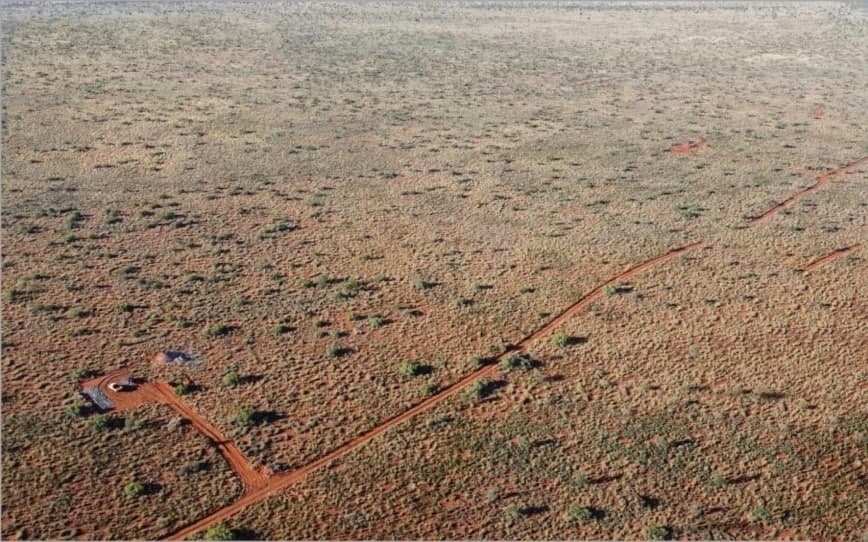WA1 Resources (ASX: WA1) is moving quickly to follow-up its early drilling success at West Arunta project in Western Australia – where it appears the company has a second large carbonatite system.
WA1 has a now received initial confirmation of a second large, approximately 2.5km by 1.0km intrusive system, with a four-hole RC drill program at the P2 carbonatite complex at West Arunta.
The company is now waiting the laboratory results of the find which was identified through preliminary visual geological field observations, with drill samples currently in transit to Perth for geochemical analysis.
Large gravity anomaly
The four-hole program was testing a P2 target area associated with a large gravity anomaly and semi-coincidental magnetic anomaly, with the program also looking to provide WA1 with a better understanding of the geological setting and mineralisation in the area.
In its field observations, WA1 noted an apparent continuity of the carbonatite system within holes PARC23005, PARC23006 and PARC23007, along with a similar weathering profile to that seen within discovery hole PARC003.
The P2 target was discovered in 2022 with a single drillhole which WA1 believed provided an opportunity to define a second mineralised carbonatite at West Arunta in addition to its Luni carbonatite discovery.
More niobium uncovered
Notably that initial hole at P2 confirmed valuable rare earth niobium mineralisation was present within the P2 intrusive.
AW1 followed up that initial find and to help define future drill targets with a ground-based gravity survey to improve the resolution of gravity station, with coverage from 400m by 400m to 100m by 50m.
The company’s initial findings were that limited drill data associated with P2 had made interpretation of the passive seismic results challenging, but it expects that outlook will be improved with further drilling is completed at P2, allowing that information to be added to its assessments.
Luni carbonatite remains main focus
Meanwhile, the company continues to be focused on drilling out the Luni carbonatite complex at West Arunta with approximately 100 holes to date, it has also commenced planning an RC and diamond drilling program to further test and define the extent of the P2 carbonatite complex.
The 2023 step out drilling campaign at the Luni carbonatite commenced in late March and the company subsequently reported promising results as it continued to define the lateral extent of the mineralised carbonatite.
Shallow high-grade niobium mineralisation has been found to be evident over a 1.4 km extent and remains open, with the high-grade oxide blanket yet to be laterally defined.
WA1 has also found evidence of high-grade, multi commodity potential at Luni in addition to the niobium.
Mineralogy studies look promising
The company has also received promising reports from initial mineralogy studies, with outcomes identifying strong liberation characteristics of the high-grade primary niobium bearing minerals within limited composite samples.
In early June, the company received interim results from a limited mineralogical characterisation and assessment undertaken by ALS Metallurgy Pty Ltd utilising QEMSCAN and XRD techniques.
The analysis was completed on three sized composite RC drilling samples taken from previously reported oxide-enriched mineralised intervals of drillholes LURC23-026 and LURC23-033.
The company said the preliminary metallurgical amenability of the samples appeared to be favourable as there is potential for high-grade concentrates to be produced based on the particle liberation observed at practical grind sizes.

